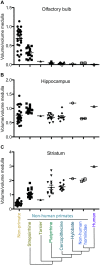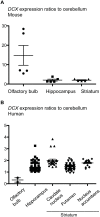Adult neurogenesis in humans- common and unique traits in mammals
- PMID: 25621867
- PMCID: PMC4306487
- DOI: 10.1371/journal.pbio.1002045
Adult neurogenesis in humans- common and unique traits in mammals
Abstract
New neurons are continuously generated in specific regions in the adult brain. Studies in rodents have demonstrated that adult-born neurons have specific functional features and mediate neural plasticity. Data on the extent and dynamics of adult neurogenesis in adult humans are starting to emerge, and there are clear similarities and differences compared to other mammals. Why do these differences arise? And what do they mean?
Conflict of interest statement
The authors have declared that no competing interests exist.
Figures




References
Publication types
MeSH terms
LinkOut - more resources
Full Text Sources
Other Literature Sources

